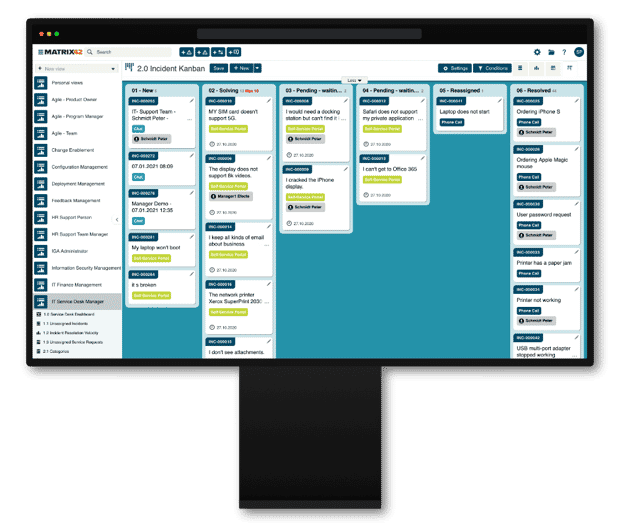What is change enablement (change management)? ITIL practices explained
Effective ITIL Change Enablement empowers organizations to innovate while maintaining operational stability. By reducing risks, ensuring compliance, and fostering agility, businesses can adapt smoothly to technological advancements and shifting priorities.
Topics Covered
Introduction
ITIL Change Enablement, formerly referred to as Change Management in ITIL v3, is a structured framework designed to manage IT changes effectively while minimizing risk and disruption. It ensures that changes—whether to infrastructure, applications, or services—are introduced in a controlled, efficient, and compliant manner. Change enablement is a key practice within the ITIL framework, which is central to IT Service Management (ITSM) and supports businesses in adapting to dynamic environments while maintaining operational stability.
ITIL Change Enablement is designed to help businesses implement valuable changes while maintaining service reliability. These changes—whether system upgrades, modifications, or emergency fixes—directly impact business continuity and operational success.
By focusing on thorough risk assessment and meticulous planning, ITIL Change Enablement minimizes downtime and disruptions, preventing unplanned outages during updates or system changes. It also ensures compliance with internal policies and external regulations through rigorous evaluation processes, effectively mitigating the risks of non-compliance.
Standardized workflows further enhance operational efficiency, simplifying tasks such as system updates, security patches, and service improvements. Moreover, this practice equips organizations with the agility to adapt to shifting business demands—whether deploying new infrastructure or addressing cyber threats—without compromising stability or performance.
Terminology
| Term | Description |
|---|---|
Request for Change (RFC) |
A proposal for a change including expected outcomes and potential impacts. |
Change Advisory Board (CAB) |
A group responsible for assessing and approving normal changes. |
Standard Change |
Low-risk, predefined changes requiring minimal approvals. |
Normal Change |
Changes involving higher risks assessed by CAB or Change Managers. |
Emergency Change |
Time-sensitive changes addressing urgent issues, managed by ECAB. |
Impact Assessment |
Evaluates the effects of change on services, systems, and users. |
The Change Enablement Process
Request for Change (RFC) Submission
Change Categorization and Prioritization
Changes are categorized into three types:
- Standard Changes: Low-risk, pre-approved modifications like software updates.
- Normal Changes: High-risk or complex changes needing evaluation by the Change Advisory Board (CAB).
- Emergency Changes: Critical fixes that require immediate action (e.g., patching security vulnerabilities).
Prioritization helps allocate resources efficiently to high-impact changes.
Change Assessment and Approval
A thorough analysis is conducted to evaluate potential risks, feasibility, and business benefits. Standard changes rely on predefined workflows, while normal and emergency changes may require CAB or Emergency CAB (ECAB) reviews.
Change Implementation
Approved changes proceed according to a well-defined implementation plan, often including procedures for rollback if unforeseen issues arise.
Post-Implementation Review
A structured review evaluates the success of the change, checks for unexpected impacts, and captures lessons learned to refine future change processes.
The process ensures a disciplined approach to managing changes while maintaining alignment with organizational objectives.
Best practices for Change Enablement
For effective implementation, organizations can adopt the following best practices:

- Automate Standard Changes - Use automated workflows and tools to streamline low-risk, repetitive changes like software updates or routine backups. This not only saves time but also enhances accuracy.
- Prioritize Emergency Changes Strategically - A defined process for handling emergency changes ensures rapid implementation without compromising governance. Establishing an ECAB for urgent assessments is critical.
- Collaborate Across Teams - Successful Change Enablement involves cross-functional collaboration between development, IT operations, and business stakeholders to ensure alignment.
- Leverage Data and Metrics - Track KPIs such as the number of successful changes and service downtime to consistently improve processes.
- Maintain Transparent Communication - Proactively update stakeholders about planned changes, downtime, and expected outcomes through effective communication channels.
By following these best practices, organizations can streamline change enablement processes, ensure accountability, and minimize the risks and costs associated with changes.
The Role of Change Enablement in ITIL and ITSM
Change Enablement is a core practice within the ITIL framework, particularly aligned with IT Service Management (ITSM). ITSM emphasizes maximizing value through standardized service delivery. Change Enablement supports this goal by carefully monitoring, approving, and executing changes that directly impact IT systems and, therefore, the overall business ecosystem.
Closely related practices include:
- Incident Management: Restores normal service operation as quickly as possible after an incident occurs.
- Problem Management: Identifies and eliminates the root causes of recurring incidents, often recommending changes to prevent future issues.
- Configuration Management: Maintains information about Configuration Items (CIs) and their relationships to support impact assessment for changes.
By working in tandem with these practices, Change Enablement ensures that changes are strategic, data-driven, and aligned with business objectives.

Matrix42 Recognized as a Strong Performer in the 2025 Gartner® "Voice of the Customer” for IT Service Management Platforms published in July 2025.
August 05, 2025





